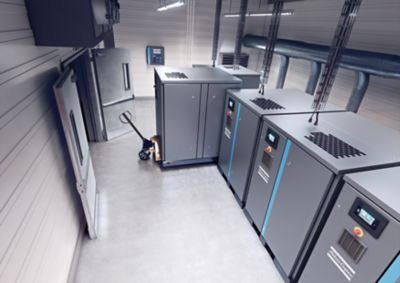December 10, 2020
How an Oxygen generator is used in manufacturing companies
Estimated reading time: 5 minutes
Using Oxygen in industry
Adding oxygen to a process enables better control of heating patterns, higher furnace efficiencies (for lower fuel consumption) and the reduction in particulate and NOx emissions.
It’s used with fuel gases to enhance processes including gas welding, gas cutting, oxygen scarfing, flame cleaning, flame hardening and flame straightening. Oxygen is a raw material in many oxidation processes and it’s also used to regenerate catalysts.
How an Oxygen generator works
The air we breathe is about 21% oxygen. Oxygen for industrial use is generated by separating oxygen molecules from the other molecules within a clean, dry compressed air stream. Pressure Swing Adsorption (PSA) is a simple, reliable and cost-effective technology that enables continuous, high-capacity oxygen flow at the desired level of purity. Adsorption happens when atoms, ions or molecules from a substance (compressed air in this case) adhere to a surface of an adsorbent. PSA technology isolates oxygen molecules from other molecules (nitrogen, CO2, water vapor and trace gases) to leave high purity oxygen at the outlet of the generator. The process takes place in two separate pressure vessels (tower A and tower B), each filled with a carbon molecular sieve, that switch between a separation process and a regeneration process. Here’s how it works.
Benefits of on-site production
Compared to the delivery of gas bottles or tanks of oxygen, in-house generation of oxygen offers many key advantages.
For example, it ensures continuous availability of oxygen, removing the risk of a production breakdown due to delivery issues or supplier shortages. It avoids the hassle of constant order processing for refills and delivery costs associated with bottled oxygen. It also eliminates the space and special handling requirements for full oxygen bottles in inventory and empty bottles awaiting pickup, refill and re-delivery.

